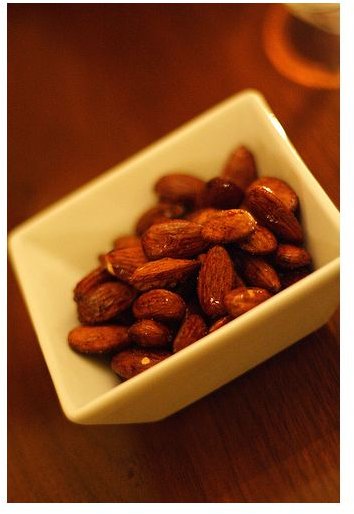Nutrition Facts for Almond Milk: Learn the Health Benefits of This Beverage
Milk made from almonds is rich, sweet, and packed with valuable vitamins, minerals, fatty acids, and protein. It is literally almonds and water, blended together to form a milky liquid. While you can purchase almond milk at the store, commercial products tend to consist of more water and sweetener and less of the actual nut. They may be however fortified with calcium and vitamin D. What are the almond milk nutrition facts of a homemade cup of nut milk? What about a serving from a packaged product?
Vitamins and Minerals
Fresh almonds are rich with vitamins and minerals. They are extremely high in vitamin E, which acts as a fat-soluble antioxidant in the body, preventing cell damage and protecting other vitamins and LDL cholesterol from oxidation. One cup of fresh almond milk will supply well over half of the daily recommended amount of this nutrient. Almonds are also rich in vitamin B2, which is important for healthy metabolism, iron absorption, and the prevention of eye fatigue and cataracts.
Drinking almond milk is also a great way to get half of your daily requirement for manganese, which is used for nerve and immune system well-being and blood sugar regulation. It is also rich in magnesium, which helps with the uptake of calcium and potassium, prevents tissue calcification, and is beneficial for preventing irritability, depression, and PMS; tryptophan which is used for the production of serotonin; and, copper which is involved with energy production and healing.
While homemade almond milk supplies all the nutrition that is found in raw almonds, commercial brands may have additional nutrients that the milk is fortified with, but they may also have a lower concentration of the vitamins and minerals that are found in the actual nuts. Almond Breeze, a popular brand for this dairy alternative is also a good source of calcium, vitamin D, and vitamin A.
Protein, Fat, and Carbs
Homemade almond milk is going to be rich in protein, healthy monounsaturated fats, and low in carbohydrates, while a commercial brand will have much less fat and protein than what you may make at home because it will consist of less almonds and more water and other ingredients. A cup of homemade almond milk, using a two to one ratio of water to almonds, will have about ten grams of fat, most of which are heart healthy fatty acids, and six grams of protein. Almond Breeze unsweetened almond milk has three grams of fat and one gram of protein per serving.
If you make this dairy substitute with fresh almonds, you will be consuming six carbohydrates and almost four grams of dietary fiber per serving. Commercial almond milks also are very low in carbohydrates but they do not supply as much fiber, with closer to one gram per serving.
Health Benefits
What are the health benefits of almond milk? Whether you make this nut beverage yourself or buy it at the store you are choosing a healthy alternative to cow’s milk. For people who have trouble digesting dairy, or who are even allergic to milk proteins, almond milk is a great alternative. Just keep in mind if you are substituting with homemade milk to make sure you are getting enough calcium in your diet from other foods.
As almonds are rich in fiber and monounsaturated fatty acids, milk made from almonds is beneficial for the heart. A diet high in essential fatty acids and fiber is known to lower LDL cholesterol levels, which lowers your risk for heart disease. All nuts are also great sources of antioxidants, another reason that almonds are good for the heart, and as a regular part of the diet they will protect your cells from damage.

Homemade Recipe
Understanding almond milk nutrition facts you can decide if this nut milk is right for you, and if you prefer a commercial brand or making your own. To make your own homemade nut milk blend one cup of blanched almonds with two cups water (add more water for desired consistency). Use honey to sweeten, start with one teaspoon and then add more if you like. Blend together and store in the refrigerator in a sealed glass container. Enjoy with cereal, use for baking, or simply drink as a cow’s milk alternative.
References
World’s Healthiest Foods https://www.whfoods.com/genpage.php?tname=foodspice&dbid=20
Blue Diamond Almonds https://www.bluediamond.com/index.cfm?navid=52
Page, Linda. “Healthy Healing: A Guide to Self-Healing for Everyone, 11th Edition” (Traditional Wisdom, 2003).
Balch, Phyllis A. “Prescription for Nutritional Healing.” Fourth Edition (Penguin Books, 2006)
photo by Darya Pino (CC/flickr) https://www.flickr.com/photos/summertomato/4411972245/
photo by Michelle Tribe (CC/flickr) https://www.flickr.com/photos/greencolander/1791143844/
